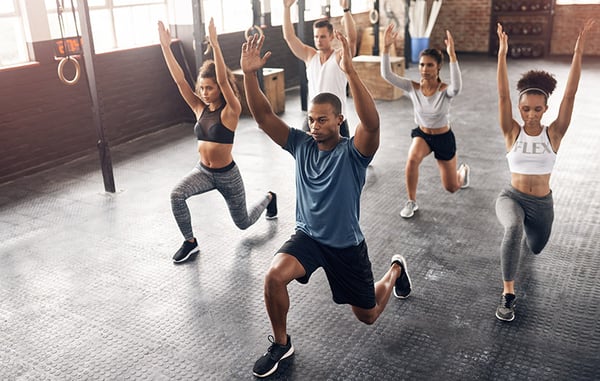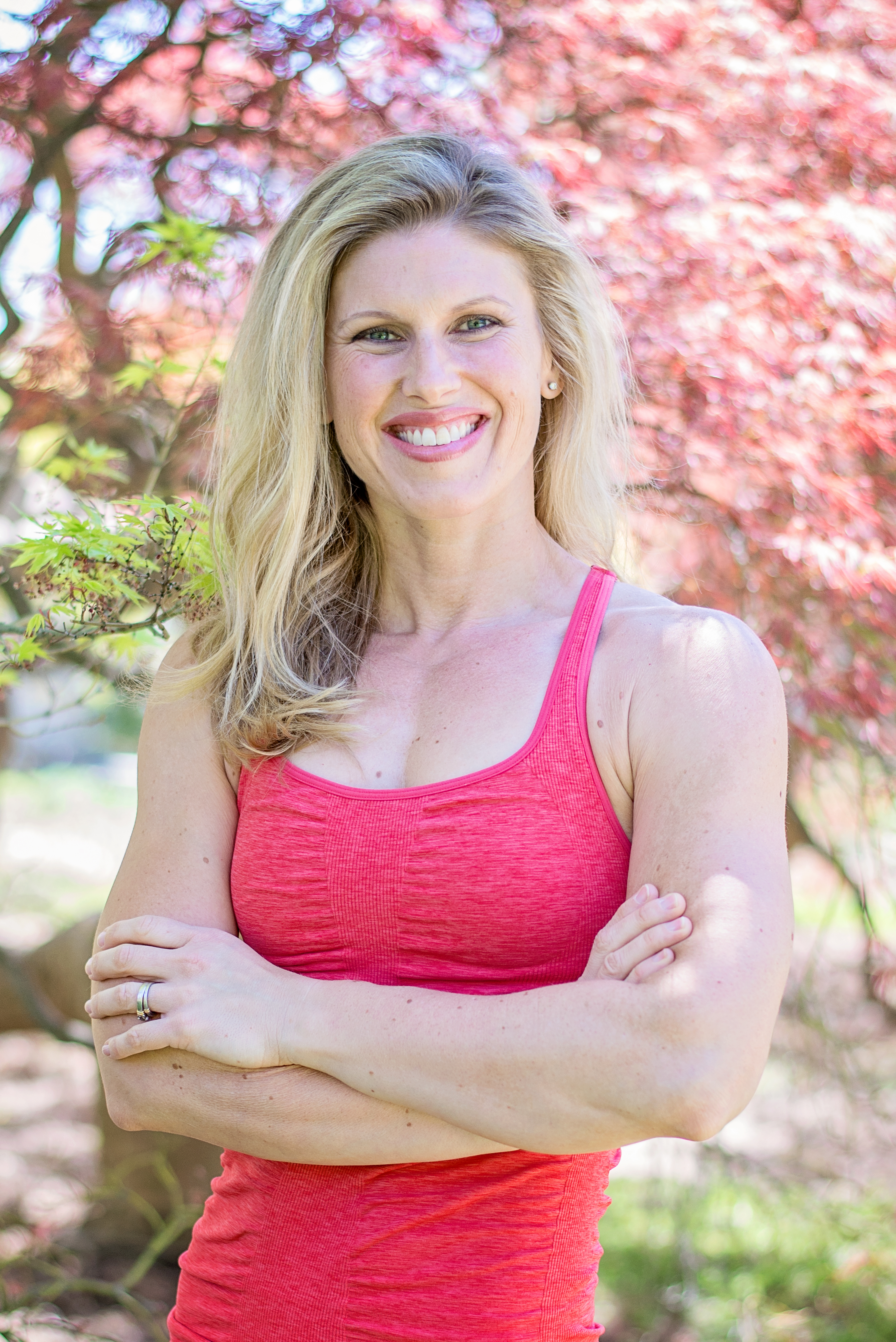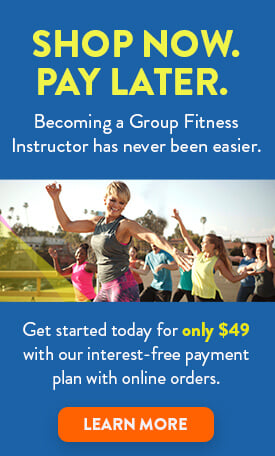
So you are a group fitness instructor who wants to create your own group fitness programming? Great! It sounds like you are already headed in the right direction. You have a vision for the type of class you want to teach. You understand the outcome you are trying to achieve, the movements that will support this outcome, and the equipment needed. You are ready to design your program. But that’s where you are getting a little hung up.
You know that the success of your programming hangs on the preparation and thought you put into it. And ensuring a connected and effective experience for the participant is the ultimate goal. So, what is the recipe for success when creating group fitness programming?
“Wow factor” classes and workouts are the product of a few key ingredients or components. When used correctly, these components can create a stimulating and energizing experience that draws people to them. Many of these ingredients are common sense, but you want to be sure they become standard practice. For that reason, following a recipe or, in this case, having a class checklist is necessary.
While the following list at first glance may look merely like a set of criteria that a good instructor should be responsible for, these components lend themselves to more than fostering fitness gains and reducing the risk of injury. They also create built-in opportunities for engagement with your audience, interpersonal connection between participants, self-growth, and personal achievement. An instructor who is competent in delivering a well-structured class and creates an opportunity for participants to change in an atmosphere of unconditional acceptance will ultimately provide a workout that is exceptional and transformative.
Five components work together to create a connected, holistic workout experience. AFAA recommends that every class include the following components.
• Introduction
• Movement Prep
• Body of Workout
• Transition
• Outro
INTRODUCTION
Beginning to build a warm and supportive environment is possible before class has even started. Welcoming participants at the door, having music playing as participants enter the studio, introducing yourself, and providing an overview of the workout and necessary equipment is the first way for you to start “reaching” your participants. Meet and greet, start learning names, a quick verbal screening with a new participant shows you are interested in him or her. This is how we build rapport. Make participants feel important, appreciated, and set their minds at ease by showing them you are caring and competent and have a game plan ready to follow. They should know and feel they are in good hands.
MOVEMENT PREP
Movement prep, aka warm-up, starts your participants moving with a purpose in mind. Rhythmic limbering or dynamic stretching for 5-10 minutes, helps increase core temperature and prepares muscles and joints for movements that will follow. The preparatory period may include more general moves like shoulder circles, side-to-side lunges, overhead arm reaches, or more specific exercises like low kicks before a kickboxing segment or resistive movements without weights before the weighted element. By including movements that will be performed later in the body of the workout, but at a lower intensity, participants get a "preview" of what's to come, a chance to rehearse it, and increase individual confidence in the process.
BODY OF WORKOUT
The body of the workout should be a series of movement patterns, training sequences, exercise patterns, or combinations that you repeat throughout the workout. Plan on spending anywhere from 20-45 minutes (in a 60-minute class) on this segment.
• Let’s say you are creating aerobic choreography. Start, by identifying your base moves, for example, marches, step touches, touch steps, and neutral moves. Build 32-count “blocks” using your base moves until you have five or more. Link them together so that when performed consecutively, you have a routine that you can “take from the top” and continue to repeat.
• If creating a group resistance class, identify your lifting movements; pushing, pulling, hip hinging, knee bending, and core strengthening exercises. Sequence them in a way that alternates push with pull exercises or upper with lower body exercises. Designate how many repetitions they will perform for each activity and how many sets of the sequence. For example, a class could include performing ten exercises in succession, with 16 repetitions. Repeat the entire series for 2-3 sets, and Viola! You have designed a total body resistance training workout.
• To design a functional-based interval workout, identify your athletic movements such as jumping, landing, throwing, crawling. Add to this general lifting movements. Next, plan your interval segments. For example, an interval could be 4 minutes in length, 3 minutes of high-intensity athletic movement followed by one minute of active recovery using dumbbells, bands, or medicine balls. Finally, develop sets of cycles. For example, six sets of 4-minute cycles make up a 24-minute routine. This will train the body, both aerobically and anaerobically, and provides total body conditioning.
Whether it be cardio “blocks,” resistance training sets, or high-intensity intervals, movements need to follow a logical order that creates flow and moves the workout in a definitive direction.
TRANSITION
The transition or cool-down intends to create a relaxation response. Time will vary, but typically the shift lasts 5-10 minutes, decreasing heart rate and blood pressure, muscles relax, and reducing physiological stress. It may also feel emotionally pleasurable as participants enjoy a sense of accomplishment and completion. Use of verbal cueing, calm, peaceful music, visualization (mental) techniques, and breathing exercises can further elicit the relaxation response. This may also be an optimal time for participant education or a “tip of the day” as participants are generally feeling less stressed, mood and attitude have improved, and they feel better about themselves overall.
OUTRO
Make a final connection with your participants during the outro. Be available after class, answer questions, and listen, give individual compliments. Solicit ideas regarding music, exercises, and equipment from your participants. Let them see that you appreciate their feedback, and you are open to involving them in the flow of the class—express gratitude for showing up and give thanks for their attendance. Make your participants feel a sense of belonging and help them hear the underlying message that you, as the instructor, care about.
Creating group fitness programming becomes easier when paying attention to these five components. When used as a basic model for designing a class/workout, an instructor can map out the entirety of his or her class and use it to develop any number of class types/styles. Whatever vision you have for your class, start by "seeing" your class's needs through these five lenses. You will not only create a workout that delivers results, but your clients will benefit in growth beyond just the physical.
References:
Aerobics and Fitness Association of America. (2010). AFAA’s Fitness: Theory and Practice (Fourth Edition). Sherman Oaks, CA: Aerobics and Fitness Association of America.
Athletic and Fitness Association of America. (2019). AFAA’s Principles of Group Fitness Instruction (Second Edition). Burlington, MA: Jones & Bartlett Learning.


